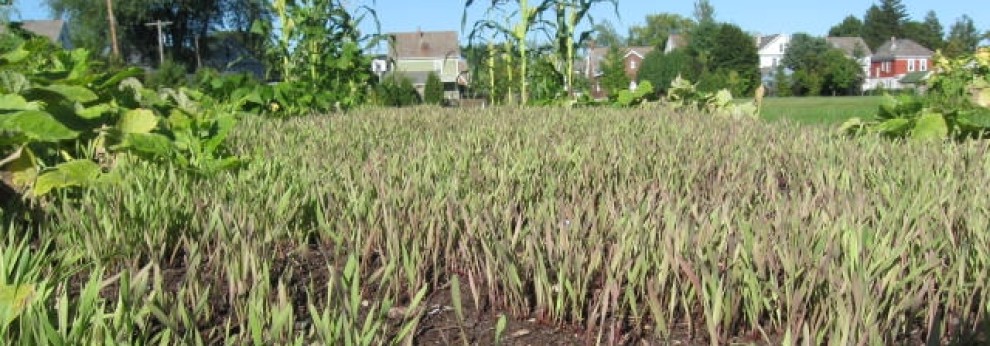 We plan to take our Myers Middle School Garden Club kids outside on Tuesday. It’s January. And though the forecast isn’t for an especially cold day, we won’t mind if it is a bit nippy. Why do we work so hard to get kids outdoors? We have tried to answer that before here and here and here. Maybe the thinking behind Tuesday’s plans can also help explain.
We plan to take our Myers Middle School Garden Club kids outside on Tuesday. It’s January. And though the forecast isn’t for an especially cold day, we won’t mind if it is a bit nippy. Why do we work so hard to get kids outdoors? We have tried to answer that before here and here and here. Maybe the thinking behind Tuesday’s plans can also help explain.
We’re going to sow seeds in a pair of hoop houses. The seeds won’t germinate any time soon. But the timing for the outing fit our schedule. And we are reasonably confident that we’ll have a profusion of green earlier in the spring than most everyone else on the block. So that could be fun to see a number of weeks from now.
Far more important, however, are a host of educational and physical and mental health benefits that researchers tell us an outing like this, or even better, regular outings like this, offers.
For example, an April 2020 article in Monitor on Psychology, a journal of the American Psychological Association, says, “Exposure to nature has been linked to a host of benefits, including improved attention, lower stress, better mood, reduced risk of psychiatric disorders” and adds, “there is mounting evidence, from dozens and dozens of researchers, that nature has benefits for both physical and psychological human wellbeing.”
Then, without even considering any specific lesson we offer about the environment or how greenhouses work or what causes seeds to germinate, use of five senses surely plays to diverse learning styles better than only the two – sight and hearing – that typical classroom learning employs.
Finally, the “measurable progress” on “learning standards” that the school world would like us to believe it supports is bound to work better when teaching and learning is built around more doing and touching and tasting and experiencing and less shoveling information at kids. We won’t teach to any particular test when we open our hoop house and scatter seeds on top of the soil. We’re an afterschool program for kids who choose to participate. But if we make observations about the environment around us or talk about seasonal changes or freezing temperatures or similarity of our small greenhouse structures and atmospheric gases that are trap warmth into the skies above us, chances are that those nuggets of knowledge will resonate more deeply than they would in the classroom version of the covering the same ground.
And so, what if the day turns out to be a cold one? Well, could we possibly do more to stimulate a love of learning and a love of new experiences than to gently suggest that there is no such thing as bad weather, only inappropriate attire? We think not.
At a time when some might seek to focus on whether our partner school district should be tougher on kids with poor attendance or maybe look the other way, we would submit that the bigger issue is whether we can make learning a compellingly meaningful and positive experience or whether we’re satisfied with something way less than that.
One outing of less than an hour with perhaps 15 kids, obviously isn’t going to turn middle school into a compellingly meaningful and positive learning experience. Just the same, we’re pretty confident that the time spent outdoors will be meaningful and positive and that our kids will be the first to declare that so.
–Bill Stoneman



